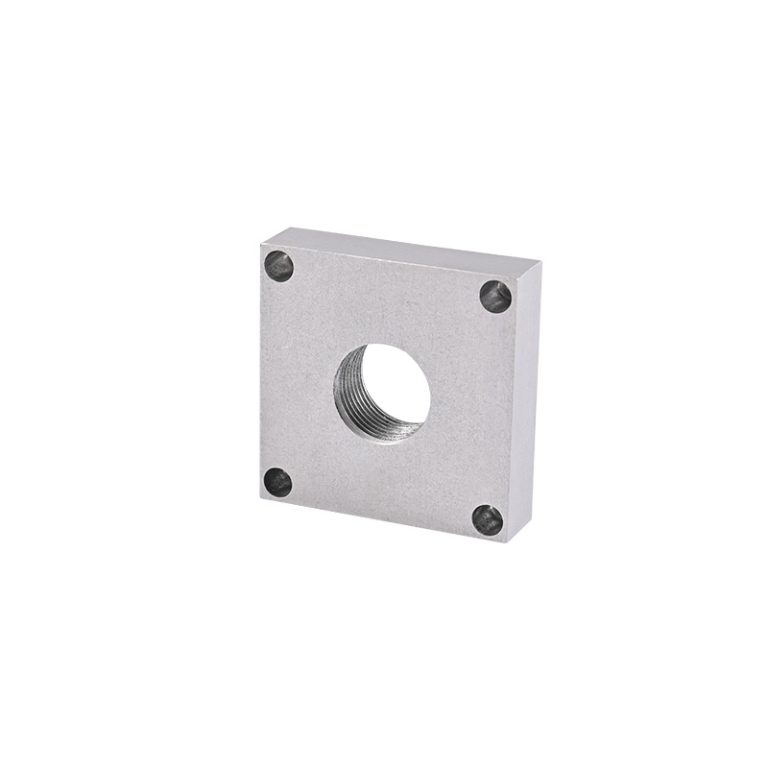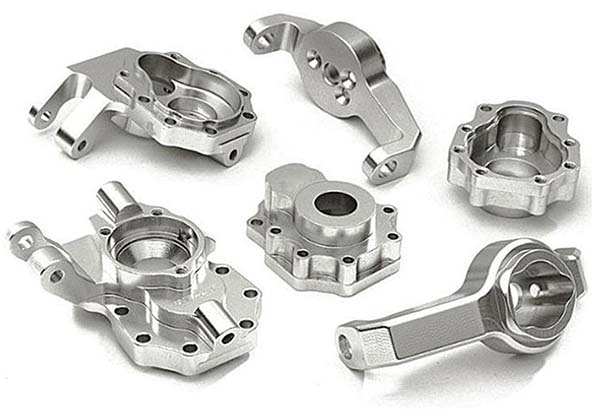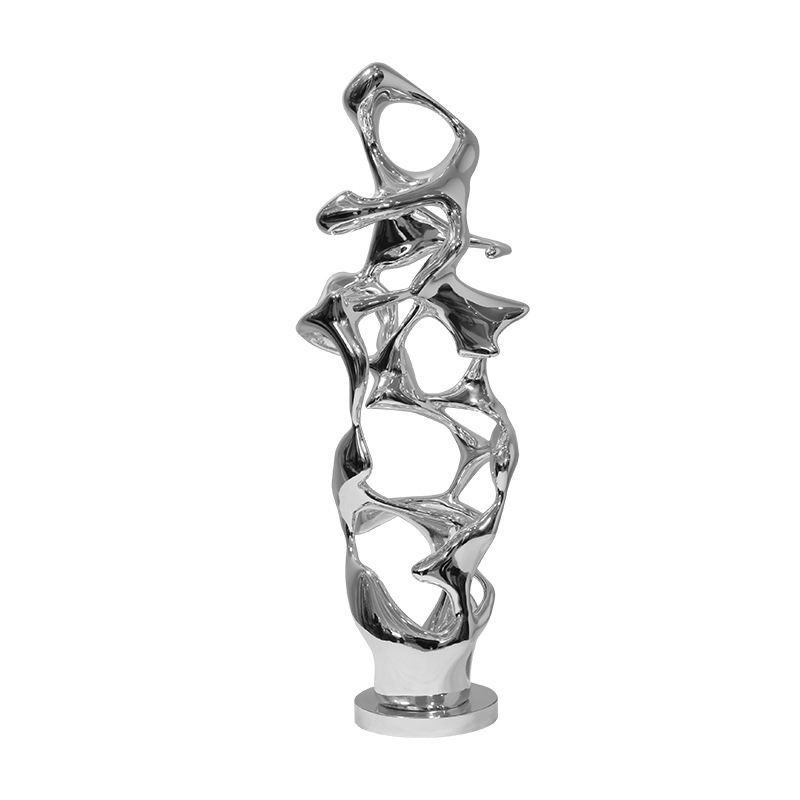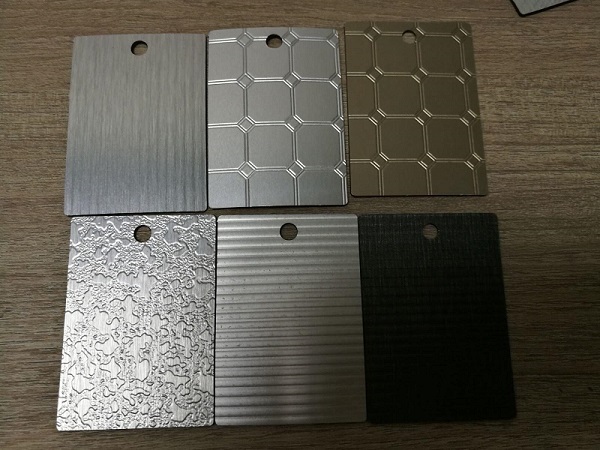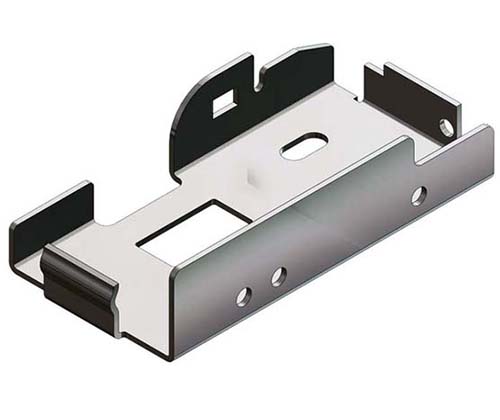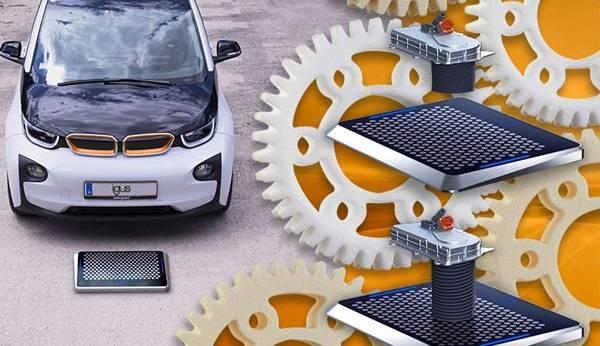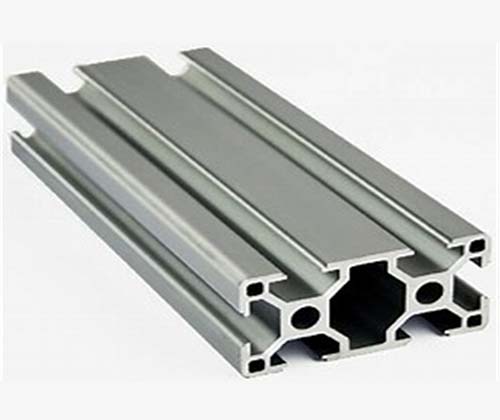Introduction
In the world of manufacturing and construction, SPHC (Steel Plate Hot Commercial) and SPCC (Steel Plate Cold Commercial) steel are two commonly encountered materials. They play crucial roles in various industries, from automotive manufacturing to home appliance production. Understanding the differences between SPHC and SPCC steel is of great significance for users when choosing the appropriate steel for their projects. Making the right choice can ensure the quality, performance, and cost - effectiveness of the final products. Whether it's a large - scale industrial project or a small - scale DIY job, the correct selection of steel can make a substantial difference.
What is SPHC Steel?
Definition and Manufacturing Process
SPHC stands for “Steel Plate Hot Commercial” and is hot - rolled mild steel plate/sheet. The manufacturing process of SPHC begins with heating slabs made from raw materials such as limestone, iron ore, and coke. The heating temperature is typically higher than the recrystallization temperature, which ranges from 900°C to 1,200°C for iron - based materials. At such high temperatures, the steel is malleable, allowing it to be easily shaped. After heating, the slabs are rolled through a rolling mill. To facilitate transportation and storage, the hot - rolled steel is usually coiled up. This coiling process is a common practice in the steel industry as it reduces the space occupied and makes handling more convenient.
Chemical Composition
The chemical composition of SPHC steel generally includes the following elements with the given content ranges:
| Element | Content Range |
| Carbon (C) | Up to 0.15% |
| Manganese (Mn) | Up to 0.60% |
| Phosphorous (P) | Up to 0.050% |
| Sulfur (S) | Up to 0.050% |
The low carbon content is a key characteristic of SPHC. This low - carbon nature contributes to its softness and workability, making it suitable for various forming operations. For example, when bending the steel, the low carbon content allows the material to deform easily without cracking, ensuring a smooth bending process.
Equivalent Grades in Different Standards
- ASTM Standards (USA): In the United States, the equivalent to SPHC would be the hot - rolled steels under ASTM A1011 / ASTM A1018 standards, particularly the grade CS (Commercial Steel) Type B. These grades have similar chemical compositions and are used in comparable applications. For instance, in some general - purpose steel fabrication projects in the US, either SPHC or its ASTM - equivalent can be used.
- EN Standards (Europe): According to the European standard EN 10025, the S235 grade can be considered an equivalent for SPHC, although it is not a direct match. S235 is often used in applications similar to those of SPHC, such as in the construction of simple steel structures.
- ISO Standards: The ISO 3573 standard equivalent for JIS SPHC is HR1, which is hot - rolled carbon steel sheets and strips for general fabrication purposes. This standard ensures that the material has the necessary properties for common manufacturing and construction tasks across different countries.
- DIN Standards (Germany): In Germany, according to the DIN 1614 - 2 standard, the equivalent is StW22, which is suitable for cold rolling. This shows that even though the naming is different, the material properties are similar enough to be used interchangeably in certain cold - rolling - related applications.
Material Properties
- High Workability: SPHC has a low carbon content, which makes it a soft metal. This softness gives it excellent workability, especially for bending processes. For example, in the manufacturing of automotive frames, SPHC can be easily bent into the required shapes. However, due to the high - temperature rolling process, the dimensional accuracy is not very high as the material temperature changes during production.
- Readily Available and Inexpensive: SPHC has high production efficiency because it is rolled at high temperatures and involves fewer steps compared to some other steel types like SPCC. This results in relatively low acquisition costs, especially for non - special thicknesses. The large volume in circulation also makes it easily accessible. SPHC plate thicknesses typically range from 1.2 to 14.0 mm, providing options for different applications.
- Low Strength: Due to its low carbon content, SPHC has low strength. While other carbon steels have specific tensile strength specifications, SPHC only has a minimum requirement of “270MPa or higher.” This makes it unsuitable for applications that demand high strength, such as high - stress structural components in large - scale industrial machinery.
Applications
- Automobile Manufacturing: SPHC is used in the production of automobile frames. Its high ductility allows it to be easily formed into complex shapes required for the frame structure, providing flexibility during the manufacturing process.
- Construction Structure: In construction, SPHC can be used for simple steel structures like small - scale industrial sheds. Its relatively low cost makes it an economical choice for projects where high - strength steel is not a strict requirement.
- General Industrial Parts: Many general - purpose industrial parts, such as brackets and some simple machine components, are made from SPHC. Its workability and cost - effectiveness make it a popular option for mass - production of these parts.
What is SPCC Steel?
Definition and Manufacturing Process
SPCC stands for “Steel Plate Cold Commercial”, which refers to cold - rolled steel sheet. It is produced by further processing SPHC. The manufacturing process of SPCC begins with SPHC. First, the SPHC is pickled to remove the black oxide film (scale) formed during hot - rolling. This pickling process is crucial as it prepares the surface of the steel for the subsequent cold - rolling process. After pickling, the SPHC is cold - rolled at a temperature below the recrystallization temperature. Cold - rolling is carried out at relatively low temperatures, usually at room temperature or slightly above, which allows for better control of the steel's shape and dimensions. Through a series of cold - rolling operations, the thickness of the steel is reduced, and its mechanical properties are improved, resulting in the production of SPCC.
Chemical Composition
The typical chemical composition of SPCC steel generally includes:
| Element | Content Range |
| Carbon (C) | Up to 0.15% |
| Manganese (Mn) | Up to 0.60% |
| Phosphorous (P) | Up to 0.100% |
| Sulfur (S) | Up to 0.035% |
Compared with SPHC, the main differences in chemical composition are the slightly different content limits of phosphorous and sulfur. The relatively low carbon content in SPCC, similar to SPHC, contributes to its softness and workability. However, the differences in other element contents can also have an impact on its properties. For example, the slightly higher limit of phosphorous in SPCC may have a certain influence on its corrosion resistance and some mechanical properties.
Equivalent Grades in Different Standards
- ASTM Standards (USA): In the United States, the ASTM A1008 / A1008M standard is relevant. The grade CS Type B (Commercial Steel) within this standard has similar chemical and mechanical properties to SPCC. This means that in American manufacturing industries, when SPCC - like materials are needed, the ASTM - equivalent can be a viable alternative.
- EN Standards (Europe): According to the European standard EN 10130, the grade DC01 (FeP01) is the closest equivalent to SPCC. In European construction and manufacturing projects, DC01 is often used in applications where SPCC would be used in other regions due to their similar properties.
- ISO Standards: The ISO 3574 standard equivalent for JIS SPCC is CR1. This international standard ensures that the material properties are consistent across different countries, facilitating international trade and manufacturing cooperation.
- DIN Standards (Germany): In Germany, according to the DIN EN 10139 standard, the equivalent is DC01 (St12) for cold - rolled narrow steel strip for cold forming. German manufacturing companies may use St12 in place of SPCC in cold - forming processes.
Material Properties
- High Workability and Formability: SPCC has a low carbon content, making it a soft material with excellent workability and formability. It can be easily bent, drawn, and shaped into various complex forms. For example, in the production of complex - shaped automotive parts, SPCC can be formed into precise shapes through stamping and deep - drawing processes.
- Smooth Surface: Due to the cold - rolling process, SPCC has a smooth surface. This smooth surface not only gives it an aesthetically pleasing appearance but also makes it suitable for applications that require a high - quality surface finish. For instance, in the manufacturing of home appliance exteriors, the smooth surface of SPCC can be easily painted or plated to achieve a beautiful and durable finish.
- Prone to Oxidation and Rusting: Since the surface oxide film of SPCC is removed during the manufacturing process, it is more prone to oxidation and rusting. To prevent this, SPCC usually has oil applied at the time of shipment to suppress oxidation. After processing, post - processing such as painting, rust prevention treatment, or plating is essential. For example, in outdoor applications, SPCC components need to be properly coated to ensure long - term durability.
Applications
- Precision Parts: In the manufacturing of precision parts, such as those used in watches and small - scale machinery, the high dimensional accuracy and workability of SPCC make it an ideal choice. The ability to be precisely formed and its smooth surface ensure the proper functioning and appearance of these parts.
- Home Appliance Exteriors: The smooth surface and good formability of SPCC make it suitable for manufacturing the exteriors of home appliances like refrigerators, washing machines, and microwave ovens. It can be easily shaped into the required designs and can be coated with various finishes to enhance the aesthetics of the appliances.
- Electronic Equipment: SPCC is used in the production of electronic equipment, such as the enclosures of computers and mobile devices. Its high - quality surface finish and formability allow for the creation of sleek and functional designs.
SPHC vs SPCC: A Detailed Comparison
Precision Comparison
The precision of a steel product is crucial in many manufacturing applications. In the case of SPHC and SPCC, the manufacturing temperature plays a significant role in determining their precision.
SPCC, being cold - rolled, has small temperature changes during the manufacturing process. This results in high dimensional accuracy. The cold - rolling process allows for better control over the thickness and shape of the steel sheet. For example, when manufacturing precision parts such as those used in electronic devices, SPCC can be rolled into very thin plates with tight tolerances, typically down to 0.5mm or even thinner in some cases.
On the other hand, SPHC is hot - rolled. During the hot - rolling process, the material is at a high temperature, which causes it to expand and contract. These temperature - induced changes make it difficult to achieve high dimensional accuracy. The thickness tolerance of SPHC is relatively larger compared to SPCC. For instance, when SPHC is used for general - purpose applications like making simple brackets, the thickness variation may be within a few tenths of a millimeter, which is not suitable for applications that require high - precision dimensions.
Property Comparison
The properties of SPHC and SPCC steel are distinct, and understanding these differences is essential for choosing the right material for specific applications. The following table provides a detailed comparison of their properties:
| Property | SPHC | SPCC |
| Hardness | Soft due to hot - rolling; has a relatively low hardness level, which makes it easy to work with in processes like bending. For example, it can be bent with less force compared to SPCC. | Hardens due to cold - rolling. The cold - working process increases its hardness, making it more difficult to bend compared to SPHC but suitable for applications where a certain level of hardness is required, such as in some mechanical parts. |
| Tensile Strength | Lower tensile strength, with a minimum requirement of 270MPa or higher. This limits its use in applications that demand high - strength materials, like high - stress structural components in large - scale industrial machinery. | Tensile strength increases with cold - working. It has a higher tensile strength than SPHC, which makes it suitable for applications that require better resistance to stretching forces, such as in the manufacturing of automobile body panels where it needs to withstand various mechanical stresses during normal use and in case of minor collisions. |
| Ductility | High ductility as it is processed at high temperatures. This allows it to be easily deformed into various shapes, making it ideal for applications like forming automobile frames where complex shapes need to be created through bending and shaping processes. | Lower ductility compared to SPHC due to cold - rolling hardening. Although it can still be formed, the degree of deformation it can withstand without cracking is relatively lower. For example, in deep - drawing processes, the ductility of SPCC needs to be carefully considered to avoid material failure during the forming operation. |
| Surface Finish | The surface may be rougher due to hot - rolling. The high - temperature rolling process can cause the formation of an oxide film (scale) on the surface, and the surface texture is coarser. This rough surface may require additional surface treatment if a smooth finish is desired, such as in applications where appearance matters, like the exterior of consumer products. | Generally has a smooth and clean surface. The cold - rolling process gives SPCC a high - quality surface finish, which is suitable for applications that require a good aesthetic appearance, such as home appliance exteriors. It can be directly painted or plated without extensive pre - treatment in many cases. |
| Dimensional Accuracy | Low dimensional accuracy due to the temperature changes during hot - rolling. The material expansion and contraction during the high - temperature process make it difficult to achieve tight tolerances in thickness and shape. For example, when used in the construction of simple steel structures, the dimensional variations may be acceptable, but not for precision manufacturing. | Achieves high dimensional accuracy through cold - rolling. The cold - rolling process allows for precise control of the thickness and shape of the steel sheet, making it suitable for applications where exact dimensions are crucial, such as in the production of precision - sized parts for machinery and electronics. |
| Weldability | Softer material makes it easier to weld than SPCC. The low - carbon content and soft nature of SPHC facilitate the welding process, reducing the risk of cracking during welding. It is often used in applications where welding is a key part of the manufacturing process, such as in the construction of steel pipelines. | Increased hardness may make welding more difficult compared to SPHC. The cold - working hardening of SPCC can cause some challenges during welding, and special welding techniques or pre - and post - welding treatments may be required to ensure a strong and reliable weld, especially in applications where the integrity of the welded joint is critical, like in the manufacturing of pressure vessels. |
Cost Comparison
The cost of SPHC and SPCC is an important factor for many manufacturers when choosing materials. SPHC is manufactured by hot - rolling, which is a relatively simpler process. It is rolled at high temperatures (above the recrystallization temperature), and there is no work hardening during this process. This means that less energy and fewer processing steps are required compared to SPCC. As a result, the manufacturing costs of SPHC are lower, and it can be obtained inexpensively, especially for standard thicknesses. For example, in large - scale construction projects that require a large quantity of steel for basic structural components, SPHC is a cost - effective choice due to its low price per unit.
In contrast, SPCC is produced by further cold - rolling SPHC. Cold - rolling is carried out below the recrystallization temperature, which leads to work hardening. The process requires greater force for processing, and it involves additional steps such as pickling to remove the oxide film from the SPHC surface before cold - rolling. These factors contribute to a more complex manufacturing process, resulting in higher production costs. For instance, in the production of high - end consumer electronics with precise and smooth - surfaced components made from SPCC, the higher cost is offset by the quality and performance requirements of the final product.
Application Comparison
Based on their performance and cost differences, SPHC and SPCC are suitable for different applications.
SPHC, with its high ductility and low cost, is suitable for applications that require hot working. In the construction of steel structures, such as large - scale industrial buildings and bridges, SPHC can be used for components that do not require extremely high strength. Its ability to be easily formed at high temperatures makes it ideal for shaping into beams and columns through hot - rolling and bending processes. In the automotive industry, SPHC is used in the manufacturing of automobile frames. The high ductility allows the steel to be formed into complex shapes required for the frame structure, and the relatively low cost helps to keep the production cost of the vehicle down.
SPCC, on the other hand, is suitable for applications that require high dimensional accuracy and a smooth surface. In the production of precision parts, such as those used in watches, small - scale machinery, and electronics, the high dimensional accuracy of SPCC ensures the proper functioning of the components. The smooth surface of SPCC makes it an excellent choice for the exteriors of home appliances like refrigerators, washing machines, and microwave ovens. It can be easily painted or plated to enhance the aesthetics of the appliances. In the manufacturing of electronic equipment enclosures, the high - quality surface finish and formability of SPCC enable the creation of sleek and functional designs that meet the demands of modern consumers.
How to Choose the Right Steel
Consideration Factors
- Application Requirements: If the application demands high ductility and the ability to withstand hot - working processes, such as in the construction of large - scale steel structures or the manufacturing of automobile frames, SPHC is a suitable choice. Its high ductility allows for easy shaping at high temperatures, and its relatively low cost makes it cost - effective for large - volume applications. For example, in the construction of a multi - story industrial building, SPHC can be used for the main structural components like columns and beams.
On the other hand, if high dimensional accuracy and a smooth surface are required, such as in the production of precision parts for electronics or the exteriors of high - end home appliances, SPCC is the better option. The smooth surface of SPCC can be directly used for applications where aesthetics matter, and its high dimensional accuracy ensures the proper fit and function of precision components. For instance, in the manufacturing of smartphone housings, the precise dimensions and smooth surface of SPCC are crucial for a sleek and functional design.
- Budget Constraints: Budget is often a significant factor in material selection. SPHC, with its simpler manufacturing process and lower production costs, is more cost - effective for applications where cost is a major concern. Projects with limited budgets, such as small - scale construction projects or the production of low - cost consumer goods, can benefit from using SPHC.
However, if the application requires high - quality materials and the budget allows, SPCC can be chosen despite its higher cost. In the production of luxury home appliances or high - precision medical equipment, the quality and performance provided by SPCC justify the higher cost.
- Processing Technology: The available processing technology also influences the choice of steel. If the manufacturing process mainly involves hot - working operations like hot - rolling, bending at high temperatures, or welding large - scale components, SPHC is more compatible. Its softness and high ductility at high temperatures make it easy to process using these methods.
Conversely, if the processing mainly involves cold - working operations such as cold - rolling, deep - drawing, or stamping to create complex and precise shapes, SPCC is more suitable. The high workability and formability of SPCC at room temperature enable these cold - working processes to be carried out effectively.
Case Studies
- Automobile Manufacturing: In the production of a mass - market automobile, the frame is typically made of SPHC. The high ductility of SPHC allows it to be easily formed into the complex shapes required for the frame structure. For example, the curved and angled parts of the frame can be bent and shaped from SPHC at high temperatures during the manufacturing process. The relatively low cost of SPHC also helps to keep the production cost of the vehicle down, making it more affordable for consumers.
For the body panels of the same automobile, SPCC is often used. The high dimensional accuracy of SPCC ensures a perfect fit between the body panels, reducing air resistance and improving the overall appearance of the vehicle. The smooth surface of SPCC also provides a better base for painting, resulting in a more attractive finish.
- Home Appliance Production: Consider the manufacturing of a refrigerator. The outer shell of the refrigerator is usually made of SPCC. The smooth surface of SPCC gives the refrigerator an aesthetically pleasing appearance, and its high formability allows it to be easily shaped into the required design. The high dimensional accuracy ensures that the doors fit tightly, improving the insulation performance of the refrigerator.
In contrast, for some internal structural components of the refrigerator that do not require high - precision dimensions or a smooth surface, SPHC can be used. These components, such as some brackets and supports, need to have sufficient strength and ductility to hold the internal components in place, and SPHC can meet these requirements at a lower cost.
Conclusion
In conclusion, SPHC and SPCC steel are two important materials in the steel industry, each with its own unique characteristics. SPHC, with its high ductility, low cost, and ease of hot - working, is suitable for applications such as steel structures, automobile frames, and general industrial parts where high strength is not the primary requirement. On the other hand, SPCC, characterized by high dimensional accuracy, a smooth surface, and good formability, is more suitable for applications like precision parts, home appliance exteriors, and electronic equipment enclosures.
When choosing between SPHC and SPCC steel, it is essential to consider various factors such as application requirements, budget constraints, and available processing technology. Making the right choice can lead to significant benefits, including cost - savings, improved product quality, and enhanced performance. For example, in the automobile manufacturing industry, the correct selection of SPHC for the frame and SPCC for the body panels can result in a vehicle that is both cost - effective and has a high - quality appearance.
In future applications, it is crucial for manufacturers and engineers to carefully evaluate their needs and make informed decisions when choosing between SPHC and SPCC steel. By doing so, they can ensure the success of their projects and contribute to the development of high - quality products in various industries. Whether it's a large - scale industrial project or a small - scale production, the proper selection of SPHC or SPCC steel is the key to achieving optimal results.
